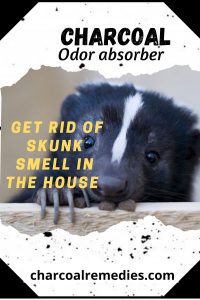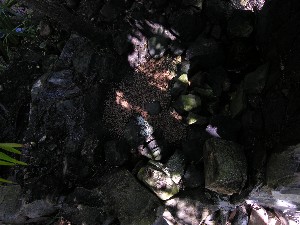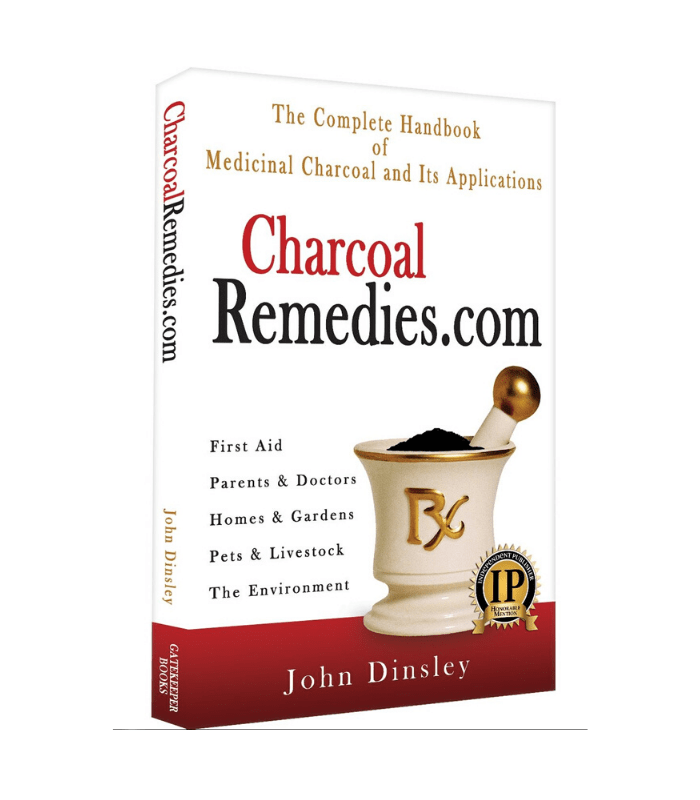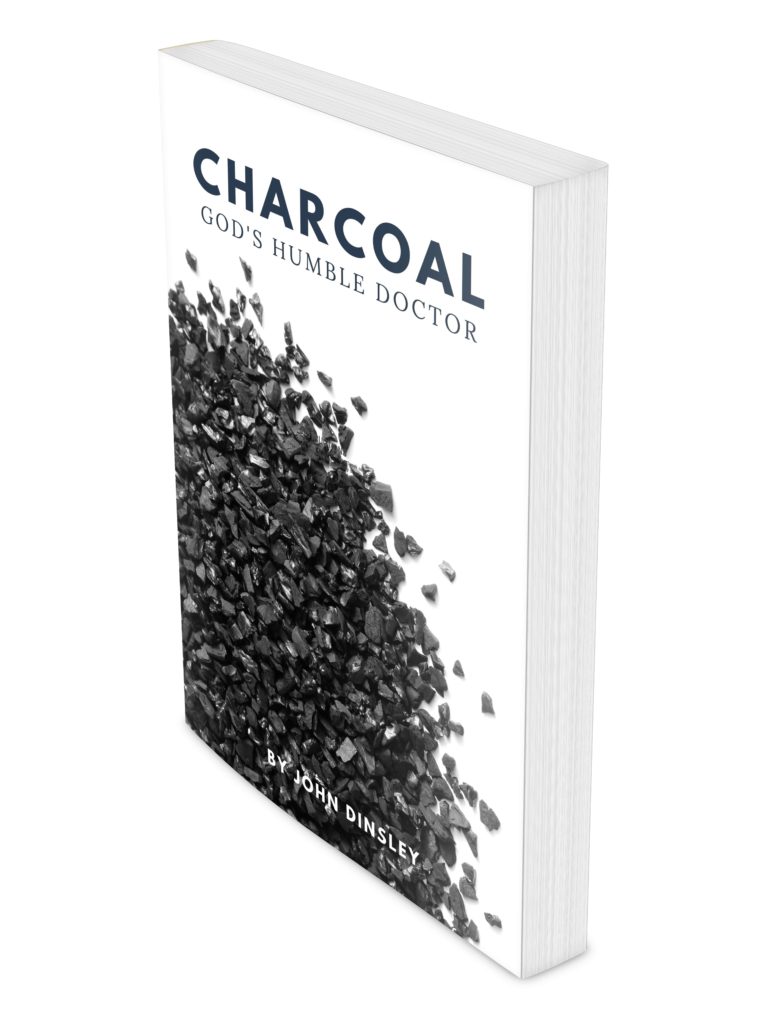CharcoalTimes™ April 2009
Table of Contents
WELCOME to the Sixth Issue of CharcoalTimes©, a courtesy newsletter of BuyActivatedCharcoal.com and CharcoalRemedies.com. This issue marks the transition from being hosted on BuyActivatedCharcoal.com to CharcoalRemedies.com. If you would like to share this information with a friend or family member, please send us their contact info and we would be happy to include them in our next mailing.
In this Issue:
- Activated Charcoal for Pets and Livestock
- New Personal Testimonies
- Charcoal News: Biochar and Gardening.
NEXT ISSUE: The Air We Breathe

Sincerely John Dinsley editor@CharcoalRemedies.com
| Charcoal for Animals |
Charcoal for sick people, sick air, sick water and sick earth. What about charcoal for sick animals? In this issue of CharcoalTimes we look at how charcoal works for pets and livestock. How to help them when they get sick, and more importantly how we can protect them from getting sick. How much charcoal should one give if they get poisoned? How can you help prevent or stop infection if they get injured? What do you do if your camel eats Iron Wood and you are more than a 200 miles from the nearest vet? We start this section off with some excepts from our book CharcoalRemedies.com Camels, Puppies, Chickens and Other Friends
CharcoalRemedies.com p. 169
What about our four and two-footed friends? Could their biochemistry and physiology also benefit from the wonders of charcoal? Just because you haven’t seen it on the shelf at your local animal clinic or country co-op, doesn’t mean it won’t work for animals or that many informed vets aren’t already using it. It probably means you just haven’t thought about asking them to stock it.
One sick camel
Alexandra and Lew made a seven-year, 17,000-kilometer expedition around Australia with a camel train. During their trip, they were always concerned for their camels, what with so many poisonous reptiles and plants, and poisoned bait set out for dingos and foxes. At one stop, they released their camels within a local stockman’s backyard coral—the last place one might expect to find a poisonous plant.
Alexandra writes, “It was an innocuous solitary shrubby thing that was growing slap bang in the middle of the enclosure. The yard owner had said it was called a ‘Bullock bush’ and that animals used it for shade and he had left it at that. It was only four or five hours after being released in the yard, when I saw Burke, the Nomads camel, who is a fairly bombastic individual, couched by the gate. All the others were milling around elsewhere. I sensed something might be amiss. Half an hour later he had moved position but was still couched. A quick scout of the area revealed that one of the camels had obviously decided to try out, albeit just a nibble, the ‘Bullock bush’. We surmised it must have been Burke, who is a notorious greedy-guts. There were no vets for hundreds of kilometers, and as it was late in the evening we decided to be on the safe side and started treating Burke as if it were a case of poisoning. Drenching a camel that wants nothing more than to be left alone to wallow in his tummy ache is not an easy task. For a drench, we came up with one of the big drink bottles from the bum bags. We managed to pull out the little plug and clamped a meter length of hose onto the remaining nozzle. Presto! A drench bottle, which proved extremely effective despite Burke’s protestations. In this way we were able to administer 250g of activated charcoal in powdered form. We also injected the camel with Vitamin C, as it is widely believed to help combat the effects of toxicity. By morning it was clear he was not improving. An old boy in the service station bar took the plant cutting from me, looked at it and mumbled, “any stock that eats it, dies.” A phone call to the Port Augusta vet confirmed the old man’s edict—the plant was highly toxic and there was no known antidote.” The vet recommended trying to flush the poison with liquid paraffin. That required a 240 mile round trip. Over the next 4 days they gave Burke a total of 3 more drenches of activated charcoal along with vitamin shots and the liquid paraffin.
“On Thursday, much to our relief, he stood up, wandered around a bit, and showed no signs of sitting down again. We felt quietly confident that Burke was over the worst… As to whether Burke would have recovered without our intervention? For what its worth, my own feeling is that our actions probably did contribute to Burke’s recovery, particularly as it was caught so quickly.” Alex e-mailed me at the end of their seven-year journey with this epilogue. “Activated charcoal ended up savin’ the day on another occasion when we were taking the camels to Cape York. One camel ate a mouthful (that’s all it takes) of Cooktown Iron Wood. Jaws took four days to recover, but recover he did.”
With all poisonings, time is of the essence. But animal studies have shown that when it comes to charcoal as an antidote, quantity definitely is a factor. A mature camel can weigh up to 700 Kg (1542 lbs). Minimum suggested quantities of charcoal for livestock poisoning begin at 1 to 1.5 grams of activated charcoal per 1 kilogram of body weight. If Burke weighed in at 600 Kg then you can see he may have responded much quicker if Alex had used 600 – 900 grams of charcoal instead of just 250grams
Bitterweed
In three separate trials, researchers looked at the potential of activated charcoal to relieve the effects of bitterweed poisoning. The first group of lambs was offered very small amounts of bitterweed and varying amounts of charcoal according to their body weight. After ten days the lambs simply refused the bitterweed. In the second group, lambs were dosed with bitterweed and then fed grain with varying levels of activated charcoal. A decline in their feed intake indicated they were experiencing the poisonous effect of the bitterweed. Those lambs that received charcoal ate more feed than those that did not receive charcoal. The third group of lambs was fed a food supplement with or without activated charcoal and then exposed to bitterweed. As we would expect by now, those lambs supplemented with activated charcoal took more bites of bitterweed than lambs not receiving charcoal. The lambs showed no aversion to eating charcoal mixed with their food.Together, these results suggest that charcoal somehow diffused the poisonous effects of bitterweed even when the lambs continued eating it, and charcoal should be considered as a supplement to stock feed. What with poisonous plants, mad cow disease and other toxic organisms, charcoal should look better and better to the livestock industry every day.
Monkeys
Animal husbandry is becoming more and more active in exploring and marketing charcoal products for a range of different ailments, but some animals just can’t wait for the wheels of progress to catch up with them. Furry jungle inhabitants have more to contend with than just parasites and microbes. Some of the most nutritious plants that they eat also contain more or less toxic substances called secondary compounds. These compounds act as a defense mechanism against hungry herbivores. Red colobus monkeys on Zanzibar Island, Tanzania prefer leaves of the exotic Indian almond and mango trees. These trees yield leaves high in protein as well as secondary compounds called phenols, which interfere with the monkeys’ digestion. What could these animals eat to counteract the poisonous nature of the leaves, while retaining their nutritional benefits? For six years, anthropologist Thomas Struhsaker, of Duke University, studied the fascinating feeding behavior of the Tanzanian red colobus. Besides having a preference for almond and mango leaves they also eat charcoal from charred stumps, logs, and branches, as well as from around man-made kilns.
“They really go after the charcoal. Bigger monkeys try to take charcoal away from smaller ones. And they come down from the trees to grab pieces much bigger than they can possibly eat, carrying it off with two hands.” University of Wyoming chemist, David Cooney, showed that the charcoal had a high adsorptive capacity for phenols. But while the toxic phenols adhered to the charcoals, the proteins did not. Interestingly, birth rates and population densities of the red colobus are significantly higher where charcoal is found in conjunction with almond and mango trees, than where there is no charcoal. Click VIDEO LINK
The right antidote
Beth’s girlfriend had a dog that ate rat poison. What could she do? She gave it charcoal and, not surprisingly, it quickly recovered.
Now, animals can be a bit like people when it comes to charcoal. At first they have no inclination to try it. So, just mix the powder right into their food. You can also quickly make up some oatmeal and add charcoal powder along with chili powder, garlic, salt or any other spice to make it smell a little more like meat. Eating Easter lilies and day lilies can leave your cats very sick. Again, early treatment is the answer. Give charcoal at a ratio of 1-3 grams per 1Kg of body weight and lots and lots of water for forty-eight hours. On their web site, the ASPCA includes it as an antidote for rat poison, especially for bromethalin. Pets commonly ingest aspirin, and charcoal works every bit as well with your favorite Buddy as it does for Johnny.
In fact, one pet site on the Internet also included charcoal for treating Tylenol, antifreeze, pesticides (pyrethrins and pyrethyoids), and insecticides. If you detect the poisoning within four hours, and administer charcoal then, you will have a quicker response. However, if rushing to a vet is not practical, and if the pet is still conscious, immediately start pouring a heavy mixture of charcoal slurry water down their throat. Better yet get some UAA gel and have it on hand for such emergencies.
Animal Poison Control Center – USA 1-888-426-4435
Whether your dog ingests some horse worm medicine (with Ivermectin), or grapes or raisins, or slug bait (Metaldehyde), or any number of other man-made poisons it makes perfect sense to have activated charcoal on hand.
Black walnut
Horses that are exposed to the shavings or sawdust from walnut trees are most at risk for juglone poisoning a natural plant toxin has been suspected to be the toxin, but efforts to document this have been inconclusive. Signs in horses occur within twenty-four hours of exposure to walnut shavings, and include rapid onset of laminitis, an increase in pulse, swelling of the limbs, rapid breathing, and elevated temperature. Necrosis of the dorsal laminae may occur and complicate recovery. Horse and Farm magazine recommends the source of the walnut should be removed, and gastrointestinal detoxification carried out using mineral oil or activated charcoal and a mild cathartic. The legs and feet should be washed.
Sick Fish
Whether it is your exotic koi fish or your not-so-exotic gold fish, all domesticated fish depend on activated charcoal from one breath of water to the next. Aquarium fish depend not only on an aerator to bubble oxygen into the otherwise oxygen-depleted water but also on activated charcoal to filter out excess CO2 and other gases that are toxic to them. Beyond that charcoal can also be used to control green and brown algae from building up in aquariums and ponds. Activated charcoal works even to make sewage water drinkable even for salmon fry. See Raising Salmon in Sewer Water in the December issue of CharcoalTimes. How NOT to kill off your sick fish.
Here is an interesting testimony sent in to us.”I couldn’t stand to watch my fish die in the aquarium so I decided to cloud the water with charcoal powder. Next morning all the fish had revived!” Oscar February 2006
Prevention
Now, what about prevention? Well the classic example is the experimentation done on OLD laboratory rats. Dr. V. V. Frolkis, a famous Russian gerontologist, and his associates showed that the lifespan of OLD laboratory rats increased up to 34% by feeding them charcoal in their daily diet! Now that is prevention! Capitalizing on this ability of charcoal to sequester toxins that impact overall health, the Food & Fertilizer Technology Center (Asia Pacific Region in cooperation with Kwang Hwa Jung National Livestock Research Institute (NLRI) Rural Development Administration (RDA), Suwon, Republic of Korea) demonstrated these benefits when feeding charcoal powder to domestic animals including cattle, pigs, and poultry:
1. increase in milk production for cattle
2. decrease in mastitis
3. reduction in mortality for pigs and laying hens
4. overall disease reduction
5. improve feed:weight ratio of pigs
6. 50% reduction in the offensive smell of manure To review the amazing results CLICK HERE.
Koi Fish Pond
Kim was enjoying his Koi fish pond until it developed a tannic acid build-up and associated odors. He also noticed other guests that used to frequent the pond no longer were coming. Kim purchased 10lbs of Sumi Balls and placed them under a waterfall thinking this would give the pond water the best exposure to the Sumi Balls. Unfortunately the action of the 2-foot waterfall was too strong and the blue-colored ceramic shells began to disintegrate turning the water cloudy. Not a good beginning.
We sent on another 10 lbs and this time Kim placed the Sumi Balls on the waterfall spillway where there was little to no agitation of the balls at all. The results were positive. Kim writes:
“The yellowish tannic color that the water originally had is gone and has not reappeared. Best of all is that the water has no odor at all. The squirrels, not to mention some songbirds, are in the habit now of drinking from the fishpond even if I’m standing or sitting nearby. That tells me that the Sumi Balls are doing their job on the odor as well.


Today is sunny and cloudless so I thought it would be a good time to take some pictures. The last Sumi Balls that you sent in December are still holding up very well. The pond is 4.5 ft. deep and the water clarity is fine. There is no detectable odor. The squirrels continue to water here instead of the much larger retention pond only 50 ft. away. The current air temperature is 66° F and the pond is 62°.”
Kim
Florida
March 2009
Acne
“I have tried many different remedies for my face acne, but nothing gave me the results that I wanted until I used the charcoal soap. Within one week of washing with the charcoal soap twice a day, my face was nearly clear of the acne.”
Grace
Kansas
March 2009
Colectomy Care
“Recently, my husband underwent surgery for the removal of his colon. He had suffered from ulcerated colitis for nearly 10 years and with no good results from any medications that are available for UC he was finally told that the only sure fire cure was a colectomy.
The surgery was a success and we are both pleased with the return to a normal life that he has experienced. But we had to face many adjustments among which was his care of his ostomy bag a couple of times a day. That often was most unpleasant for him and anyone else who might be near his bathroom. The odor was more often than not, quite overwhelming. His ostomy supplier sent us samples of several different odor control tablets that were to be placed in his bag but none of them helped. Room sprays only added to the odor. Then I remembered that I had a bottle of activated charcoal capsules in the medicine cabinet that I had bought several years before to use as a poultice on a brown spider bite (works like magic!!). So I had him begin adding several caps to his bag each time he emptied it. The odors were gone. And I mean GONE!!

I decided to look online for a bulk supplier and there you folks were. Wonderful. And I am writing to tell you that the “Kitty’s Odor Stopper” granules has made both of us happy. Now, if we are visiting friends or he is in a public restroom, he no longer has to worry about the terrible odors. I fixed a small squeeze bottle that dispenses about a 1/2 tsp. with each squeeze. He can carry it in his pocket when we travel and keeps one in his bathroom.
I just wanted to tell you so that you can add that to your list of uses of activated charcoal.
Most gratefully”
Lynda
Florida
March 2009
Sleeping Again
Hi Again! We are finally sleeping again! To be honest at first we were skeptical about the medicine (Colic Calm for babies) BUT it WORKS.
Anyway, I would like to order 4 bottles of Colic Calm.
Best regards
Marko
United Arab Emeritus
February 2009
Beautician Saved
“Thank you so much for the masks! They saved me!! I smell nothing when I am wearing one! I can do color now without getting sick!!”
Marti
Minnesota
February 2009
Rattlesnake Bite
Bob sent us a short note; “I take Activated Charcoal everyday and I feel great.” I wrote back and asked, “Can you tell us a little more about how you came to use charcoal, for what, how you use it, any memorable experiences?”
Hi John, Thanks for the reply. I live in a mountain community in WV. About a year ago my neighbor’s daughter was bitten by a rattlesnake. She is about twelve years old and weighs about 70 lbs. She was taken to Charlottesville VA poison control center. After several weeks of treatment the prognosis was not good. She was sinking fast.
My neighbor told me that one night, another one of our neighbors knocked on his door and presented him with I believe a poultice and asked him to put it on his daughters wound. My neighbors asked him what the “mechanism” was that would help and he was told Activated Charcoal.
Long story short, they did what was suggested and her recovery began immediately. Please keep in mind that the little girl’s parents are both doctors.
When he (my neighbor) related this story to me I began researching Activated Charcoal. I take it almost every day. One of my friends drinks it about three times a week and he indicated that after about three months, his cholesterol dropped about thirty points.
For me it has improved how I feel in general. Probably about thirty percent more energy. No drop in energy in the afternoons after lunch which used to be a huge problem for me. It is almost unnoticeable as it is natural feeling. I have cut my blood pressure dose in half with no adverse effects. I’m convinced it is the real deal.
Bob
West Virginia
February 2009
Foundered Horse
“Last fall I purchased some activated charcoal because I have a friend’s horse at my house that she got because he was foundered and she wanted to help him recover. He had a real bad smell omitting from his body constantly because he is a severely foundered horse. His hooves were slowly recovering but his body wasn’t. Within 3 days of giving him the activated charcoal, he smelt like a horse should smell like. Since then, swelling has gone down around his hooves and he has made tremendous improvements in his hooves and body condition. He is wanting to move around more and the growth in his hooves are looking great. Granted, I am feeding him vitamins minerals, diatomaceous earth for natural deworming + the benefits from that product, probiotics and he gets trimmed every week or two. Definitely, the activated charcoal cleaning out his system has been the best for him. Buddy thanks you for such a great product. My friend and I are hoping we will be able to ride Buddy this summer.”
Tami
Oregon
February 2009
Chicken Bread
Rita is an herbalist and among her many recipes there is one for her chickens of which one of the ingredients is charcoal powder, but “my adult children and grandchildren discovered how delicious the Chicken Bread is and wont, even with the grittiness, leave it alone.”
Rita was looking for a finer grade of charcoal powder, and we were able to recommend Coconut Ultra Fine. In appreciation Rita shared her Chicken Bread recipe. Her sister Priscilla forwarded it on to us. “I’m writing because my sister still prefers stone and chisel to communicate with. The recipe is simple, the ingredients are a little complicated.”
To your favorite white bread recipe…
delete one cup of white flour
add whole wheat in its place
replace butter with olive oil
use sea salt from the Grain & Salt Society (high mineral content)
2 tsp Diamond XPC-LS (an animal nutritional yeast and human immune booster)
1 tsp charcoal powder (Coconut Ultra Fine)
1 tsp green powder blend (mix of 1 lb. each of kelp, wheatgrass, turmeric to which has been added one ounce of ground black peppercorns and a 1/2 oz cayenne)
2 Tbs fresh ground cornmeal
1 tsp graviola
1 tsp dried orange peel
a handful of dried local herbs that chickens seek out
“Don’t worry if it doesn’t rise well. The chickens (and children) will love it! You should see the chickens come running from all corners of the yard when the “Pied Piper” comes with her chopped up bread!”
Rita & Priscilla
January, 2009
Diabetic
Thank you for asking about my sister-in-law. She is on dialysis now and looking and feeling better than she has in years. She started the charcoal poultices the weekend after I talked to you. We did the treatments every four hours throughout the weekend and when we left their home that weekend, her husband and my sister continued to apply the poultices until her appointment to begin the dialysis in the hospital that week. I’m not certain how much progress we made with the dialysis prior to her appointment—just not enough time to tell—but her sugar (remember she is a very brittle diabetic) seemed to even off with no peaks or valleys while she was using the poultices.
My family (who all think that this is crazy) are all starting to sit up and listen to the benefits of charcoal. We will be in Florida with them in February, and I, of course, will be taking my charcoal.
Judy
Michigan
January 2009
THC overdose
We had a woman call last month whose son was scheduled that afternoon for a urine analysis for illicit drugs. At the time he was just coming down from a binge on THC. I directed her to give him as much charcoal as he would take—multiple tablespoons every hour and lots of water. The mother called several weeks later to tell us he tested negative that afternoon!!
Now I did stress that God has given many other healthy substitutes to drugs and urged the mother to urge her son towards a better lifestyle. Sometimes a simple remedy like this does actually work as a springboard to better choices.
Editor
January 2009
Throat Cancer
“I just had to let you know how charcoal has helped some friends and a cat. Our friend, George, had throat cancer that was well advanced, and my husband told his wife about charcoal. They immediately got some, and began using it. We saw them a few weeks later, and you could hear George coughing up that junk in his throat. Today, some several months later, George is cancer free and imagine that—his doctors can’t figure out why!!
Another incident—Prince Albert my Persian cat had severe problems which resulted in me having him completely shaved except for his head. He had dug and scratched a hole in his hip, which I could not see with all that hair. The hole was deep and infected, and I put charcoal in it, then Echinacea. I just opened a capsule and dabbed it down in the hole on his hip. I followed that with a few drops of Echinacea and I guess it made a bit of a paste, and it stayed in there. I covered it with a band-aid to keep the good stuff in there. I did this again, and repeated everything, each time pulling out a horrendous amount of pus and infection. The next day a great amount of infection came out of there, and I did the same thing again. The next day more infection, and I repeated the procedure. A week later, you could not even see where he had any problem whatsoever. What great stuff charcoal is!!!
I also know that it works for stomach upsets as well. One day about a year ago I came to work fine, but about 8:30 I was sick as could be. I went to lie down and when someone came to check on me, I asked them to get me some charcoal. (At that time, I did not know what it was capable of, and did not carry it daily) She brought me some, and within the hour I was able to drive the 10 miles home. The next day I saw the person who helped me, and she couldn’t believe I was walking around our farmer’s market! (Made a believer out of her).
We have been blessed, no doubt. Sadly, most people don’t know, or really don’t want to know that it works. I’ve been poo pooed so many times!”
Kay
Indiana
December 2008
Hot Tub Smell
“Dear folks, Last week I purchased some Sumi Balls from you to put in our hot tub. We do not use harsh chemicals (chlorine) in it so the water gets a little bit of a stale smell to it. Anyhow, I put the Sumi Balls in a bag and put it into the water Friday afternoon and when I got into the hot tub Sunday morning I immediately noticed that the water did not have any smell to it at all. This morning when my husband used it he also noticed the freshness of the water. I put some in my fish aquarium today!
We keep many of your products on hand and take the charcoal capsules when we travel. We have never been disappointed in the results.
We live on a ranch so have many animals and we have used charcoal to treat them also. A couple of months ago we had a kitten that appeared to have distemper and looked like it was going to die. I put some powdered charcoal in some canned cat food and fed it to it several times and although it is the runt of the litter it is also the toughest now.”
Thank you,
Wilma
Nebraska
November, 2008
Dental Powder
“I wanted to thank John for the book. That will be a lot of help. And that is you from TV. You did a good job on the show (Wonderfully Made on 3ABN). I wanted to try it because of what you had to say about it. I will let you know how it works for my family. I already brushed my teeth with it, even though it is messy. I think my breath has smelled good all day. Thanks again.”
Carrie
Minnesota
November, 2008
Wasp Sting
“My three year old was stung by a yellow jacket on his little hand. Amid his hysterical screams, I dumped some charcoal powder into a large bowl and added water. I plunged his hand into the black water and, instantly, his screams stopped. We swished his hand around in it for a few minutes while looking at a book. Then he took his hand out and said it didn’t hurt any more. That was truly the end of the sting.”
Linda
Nova Scotia, Canada
November 2008Charcoal News
Health Presentations
Wednesday April 1
You are the Gatekeeper of Your Health Chadron State College, Chadron NE
Biochar and Gardening
First, what is Biochar? How does it compare to just plain charcoal or activated charcoal?
Biochar is the new techie eco name for plain charcoal made from renewable plant material (biomass). In its simplest form it would be the leftover coals from a campfire. In newer technical applications it could be the end product from commercial scale pyrolysis plants that use everything from forest trimmings to chicken manure to city garbage as the feedstock. You can see that, along with the wide range of starting material, there is also a significant range of end product. Coupled with this are the temperatures used and the length of time to “cook” the biomass. Pyrolysis plants are able to maximize their operations to produce mostly high-grade (low ash content) biochar, or more sellable biofuels and nitrogen-based fertilizers with a resulting low-grade biochar with very high ash content.
Charcoals made from coal are not considered biochar. Although fossil fuels have their origin in ancient biomass, they are not considered biomass by the generally accepted definition because they contain carbon that has been “out” of the carbon cycle for a very long time.
This whole interest in biochars is driven by the growing concern that the increased carbon emissions from modern agricultural practices coupled with industrial pollution are contributing to global warming and its dire consequences. Biochars not only retain much of the carbon directly in the soil but also capture and retain carbon from the atmosphere thereby having a carbon “negative” effect.
The interest in biochars for agricultural use stems largely from the fascination with the ancient/modern Terra Preta soils of the Amazon basin in South America. These biochar soils act like ocean coral reefs in that they provide a very rich habitat for a wide range of soil microorganisms. Nutrients are held in the root zone rather than being leached down by heavy rains. More amazing is that these soils, like all living things, are somehow able to reproduce themselves and can be selectively “harvested” without damaging them! All together sounds like a win, win, win situation.
Consequently researchers, agricultural departments, innovative farmers, and backyard organic gardeners alike are all scrambling to figure out the secrets of the legendary El Dorado—no not of lost gold, but of biochar.
In the fall of 2007 when we first learned about biochar we were starting to get inquiries for charcoal for gardening. We thought at first it was for soil remediation which has been a longstanding practice. But on inquiry we were told it was actually to study the impact on overall soil health and plant production. Having operated a market garden and taught organic gardening I was immediately captivated by what I was able to Google on the Internet. So began our introduction to biochar. Last year we began to get more and more requests for biochar and it was then that we introduced Charcoal Green—an inoculated biochar. We are still on a steep learning curve but take comfort knowing that even some of the experts at some of the big name research departments knew nothing of biochars even as late as this year! “How could that be possible?” they ask incredulously. Nevertheless the fact of the matter is most reading this newsletter probably are hearing about it for the first time themselves.
We would like to invite you to the Gardens & Farms page and scroll down to the Popular Links at the bottom of the page. These links are just a springboard to get you started on your own research.
A year ago, in our ignorance, we offered activated charcoals to interested customers eager to experiment with their own gardens. While there was no concern that the activated charcoal would harm the soil, still common sense tells us that the ancient Amazon civilizations only had access to primitive biochars not to modern activated charcoals or souped-up biochars. So if the plain stuff worked so good for them then it should also work in the 21st century. Well it does, but those folks had one great advantage over us – they did not expect miracles the first year. They were willing to work and wait for years before seeing the real fruit of the labors. Our generation is not gifted with the same vision or patience. We like or need to see significant results in one growing season or economics most likely will drive us back to practices we would rather leave behind.
The reality is, tilling in plain raw biochar initially ties up soil nutrients to a greater or lesser degree. So, some plant crops, especially heavy feeders, will likely not show the same growth as they would three or four years down the road. It takes about that amount of time for the nutrients, Mychorizae, and other organisms to establish their own ecosystem. While even modest benefits may be seen even the first year (as seen in this row of corn planted in a back yard), the practical benefits will either come in following years or by supplementing the biochar (Process Charcoal) from the beginning.
Activated charcoals are used to decontaminated soil by “loading” up the charcoal with the toxic compounds. In the same way biochars take some time to “load” up that eco-reef with nutrients before they are available to the plants. So, as a work around to the time factor, you will likely see more biochars coming on the market like Charcoal Green that come inoculated (pre-loaded) with nutrients and microbes.
Believe it or not plain raw biochar is hard to find. As far as we know we are the only retail outlet that offers inoculated biochar. But by the end of April we will also be offering the plain version of Biochar made from an assortment of hardwoods. It will range in size from ½ in down to dust in 30lb bags. Please check back to our Gardens and Farms page in another 10 days or so.
Because this biochar gardening is still new for most of us we really want those customers who purchase biochar to give us some feedback this fall. Field trials with tomatoes, sweet corn, soy, wild birdseed, flowers have already shown very good results with Charcoal Green, but we need more pictures and statistics. In the meantime we hope all you gardening experts will discover you also have a black thumb.


John Dinsley
Born in British Columbia, Canada, John Dinsley has lived, and worked from South America to the North Pole, from Nova Scotia to Nepal. He is trained as a lifestyle counselor, teaches public health programs, home remedies workshops, and has operated a family care home. He and his wife Kimberly are the owners of Charcoal House LLC. They often travel together across the U.S. and internationally to conduct charcoal workshops. He is a carpenter by trade, has managed an organic market garden business, and volunteered in overseas development work. When he is not building, teaching or gardening, he enjoys writing.



